Since the beginning of time people have been trying to understand human behavior and the inner workings of the mind.
However, it wasn’t until the early 1800s that psychology transitioned from a philosophical nature to a scientific one.
When it comes to ecommerce, user behavior and psychology are more relevant than ever.
Behind every click is an internal combustion of emotion, physiology, and hard-wired instincts tempered just slightly by rational thought.
Tapping into these factors is critical to maximizing the total number of visitors that transform into happy customers. But harnessing them for your business isn’t as simple as changing a button color on your CTA or using a power word.
It calls for a genuine interest in what your customers deeply care about, and building a business and brand that satisfies their desires.
Here’s how consumer psychology plays a role in ecommerce today and how it can help you build a genuine connection with your visitors and customers …
Ready to grow your business with data analysis?
This article is an abbreviated excerpt from The Shopify Plus Data Analysis Course, one of many courses available exclusively to Shopify Plus merchants …
Explore data analysis fundamentals, terms, techniques, and handy math. Learn how to utilize platforms like Google Data Studio, Facebook Analytics, business intelligence tools, and session recording apps.
Not on Shopify Plus? Connect with us today
How Customer Psychology Manifests in Ecommerce Today
Psychology is often thought of as the easy route for a college major. It gets relegated behind hard skills like finance or accounting. Many serious business people consider it rather useless outside of coaching or counseling.
But that couldn’t be farther from the truth when it comes to marketing in the 21st century. And especially when it comes to ecommerce.
Every interaction that a user has with your business is a psychological and emotional dance. In this section, we’ll discuss two important theories and how they play a massive role in ecommerce today.
The Transtheoretical Model and Stages of Change
The Transtheoretical Model, also known as Stages of Change, was developed by Prochaska and DiClemente in the 1970s.
The model focused on the life cycle of smokers who were trying to quit. However, comparing the experiences of smokers who successfully quit uncovered an amazing similarity with today’s typical customer journey map.
Stages of Change focuses on the internal thought process and decision making of each individual. The theory of the model revolves around this central premise:
The TTM operates on the assumption that people do not change behaviors quickly and decisively. Rather, change in behavior, especially habitual behavior, occurs continuously through a cyclical process.
The typical process can be broken down into several distinct stages. Each required a specific step or action that got smokers one step closer to quitting. But it wasn’t until someone progressed through the entire chain that they saw lasting success.
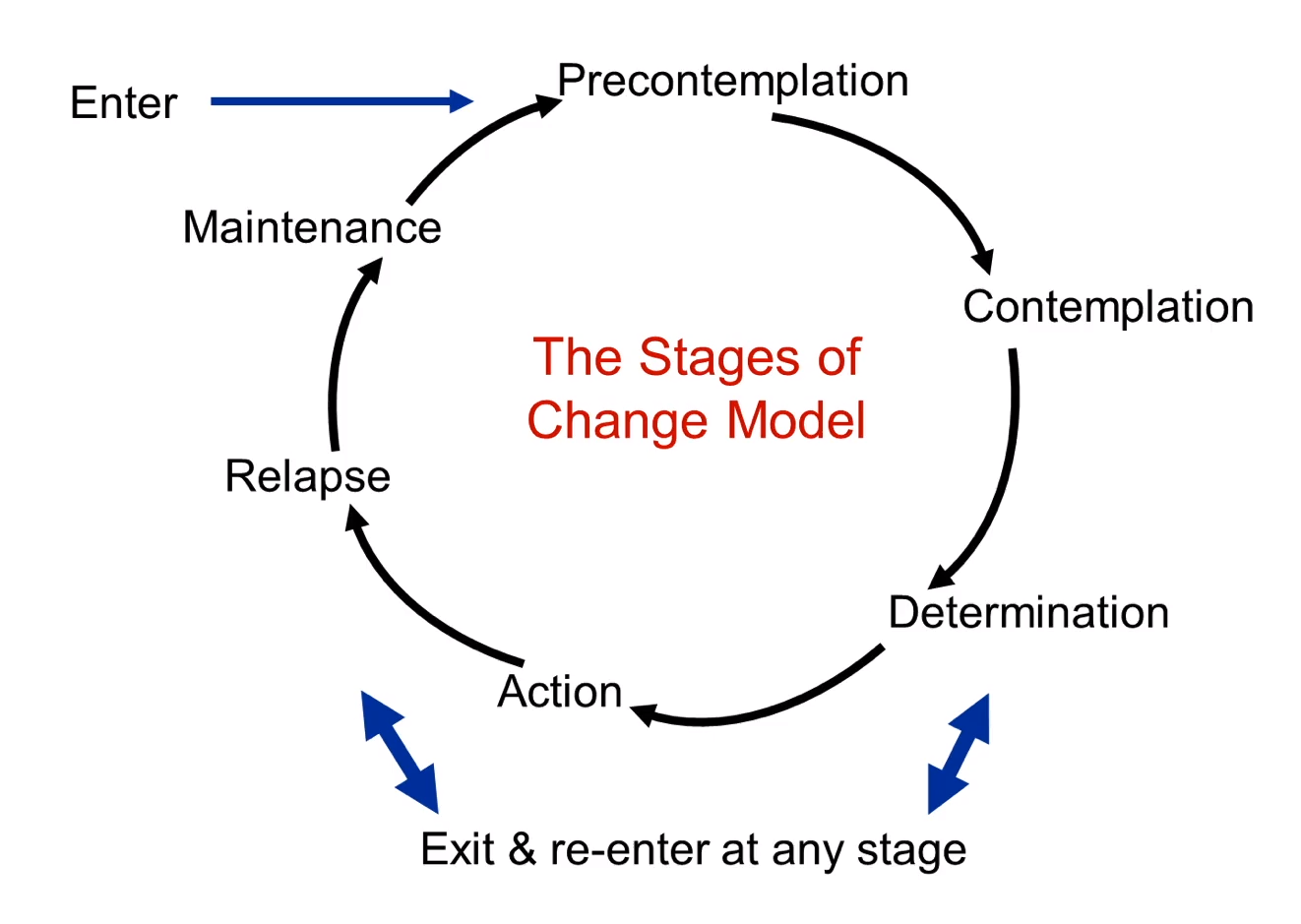
Smokers start by being unaware of the need to change (“Precontemplation”). They haven’t thought about kicking the habit at all.
First, they need to come to acceptance and move through both “Contemplation” and “Determination” before anything ever happens (“Action”).
This is starting to sound oddly familiar to a traditional buyer’s journey, right?
However, it requires specific tactics to move a person from Precontemplation to Contemplation. Just like blog content or lead magnets can move someone from Awareness to Consideration.
Someone can go from Determination (wanting to take action), to actually following through with assistance or incentives. In ecommerce, this could be getting a discount coupon to turn that determination into a sale.
When you break down each stage, it starts to line up like a powerful marketing funnel.
Compare the smoker’s journey …
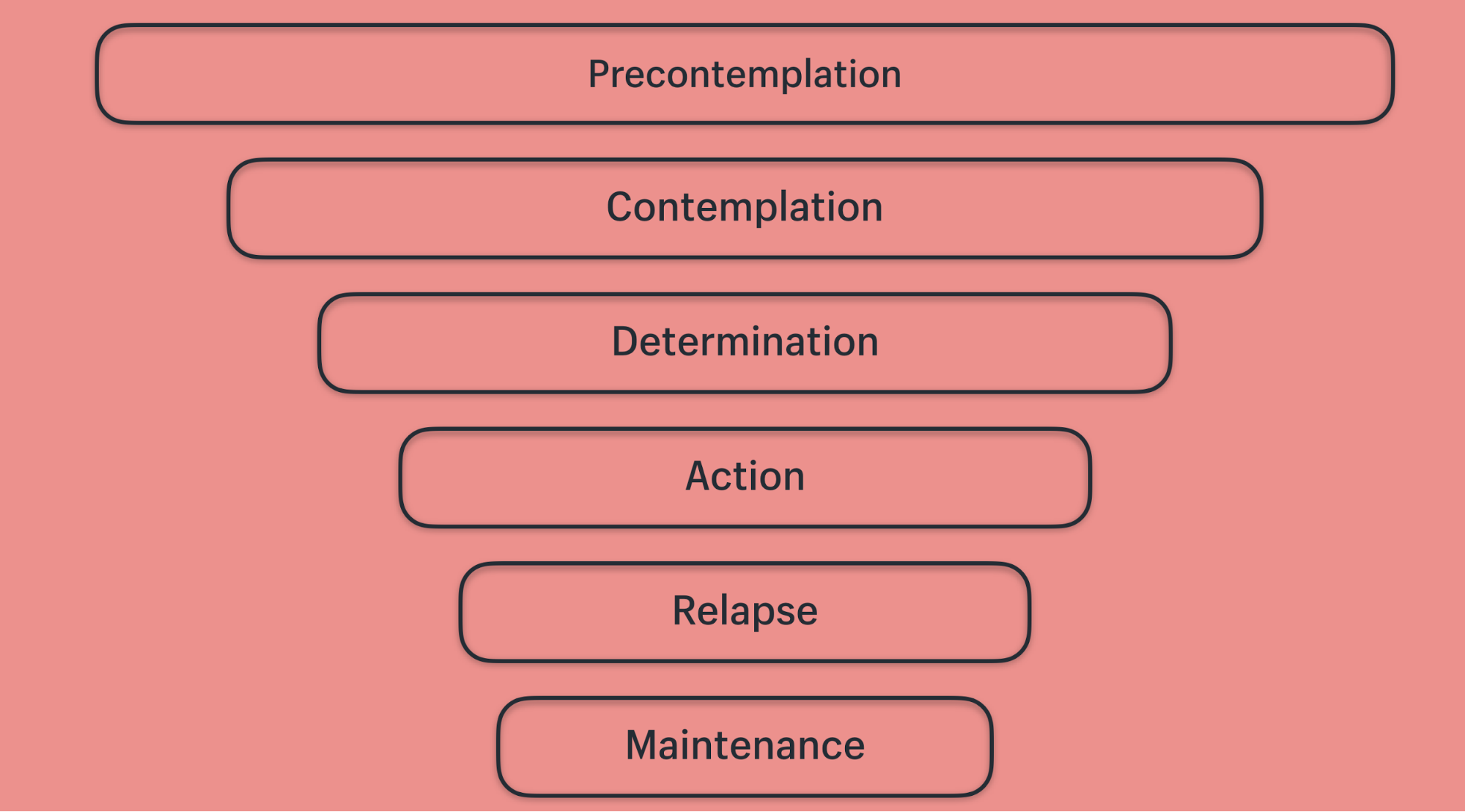
… with that of most ecommerce customers:
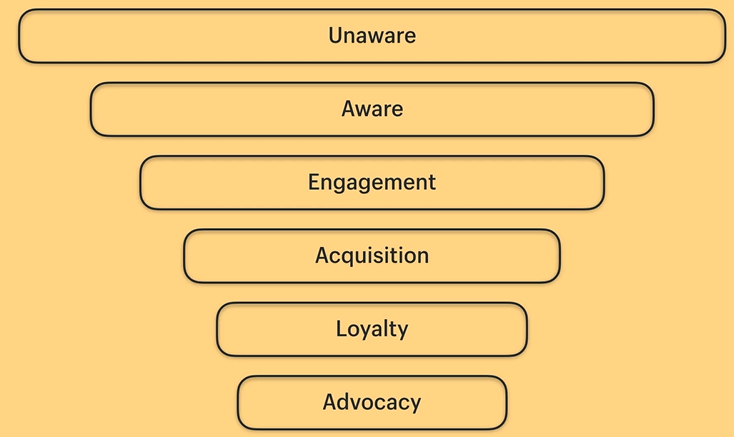
As a person travels through the cyclical stages and further down the funnel, they become more committed. Along the way, specific interventions (CTAs, lead magnets, etc.) help guide them to the next step when they’re ready.
Sure, you won’t convert every single lead in this journey. Not everyone quits smoking. However, the ones at the bottom who make it through end up making habits stick for the long term. This is the lasting change they were looking for, and you, as a marketer, need to get high-ROI, repeat customers.
Still, two questions remain:
- How do you get a user to move through the stages of your funnel and closer to a purchase?
- What makes them click an ad, or opt into your newsletter, or start to check out?
This is where the science of motivation comes in …
Behavior Change Model and the Science of Motivation
The second theory we’ll examine — known as the Behavior Change Model — was developed by Dr. BJ Fogg:
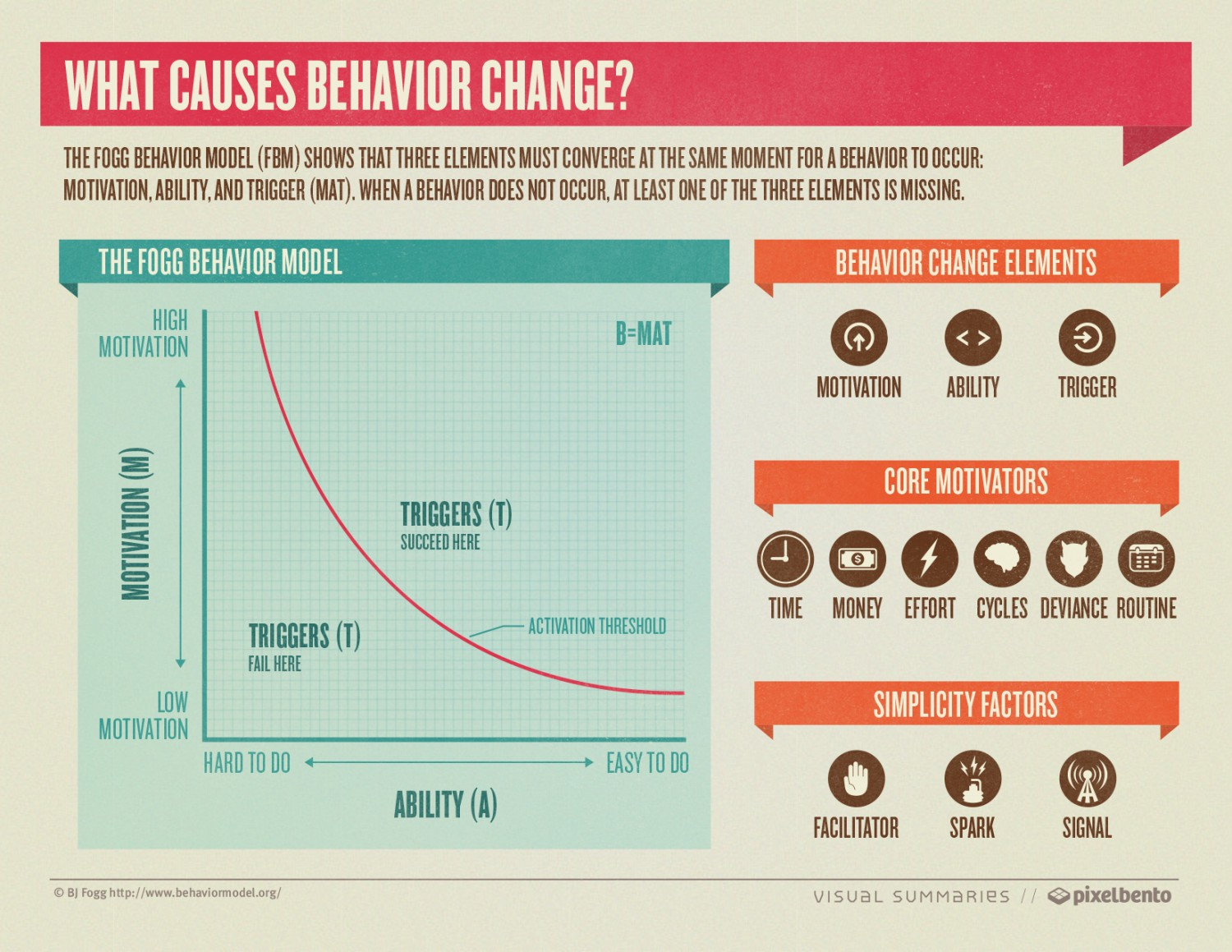
Fogg’s aim was to explain how human behavior works and why specific actions do or do not occur. The model can help answer burning questions as to why your traffic isn’t converting or why certain products don’t sell as well as others.
Human behavior only happens when motivation, ability, and a trigger converge. When one of those three elements are missing … behavior cannot occur.
Motivation is described as a blend of a sensation (pain versus pleasure), anticipation (hope versus fear), or social belonging (acceptance versus rejection):
- Pain
- Pleasure
- Hope
- Fear
- Acceptance
- Rejection
Any of these motivations or a mix of all six will determine how much someone wants to take an action. Once the motivation is high enough, it must match or exceed their ability.
Ability is the effort required for the action. For example, how much time, training, or money is needed prior to purchase? These ‘requirements’ can creep up as purchasing objections if you don’t do something to minimize their perception.
Lastly, triggers are what prompts a user to take action. Think through all the CTAs, emails, ads, and more you use to trigger the action you want someone to take.
Here’s an example of how the three main elements might apply to Tesla.
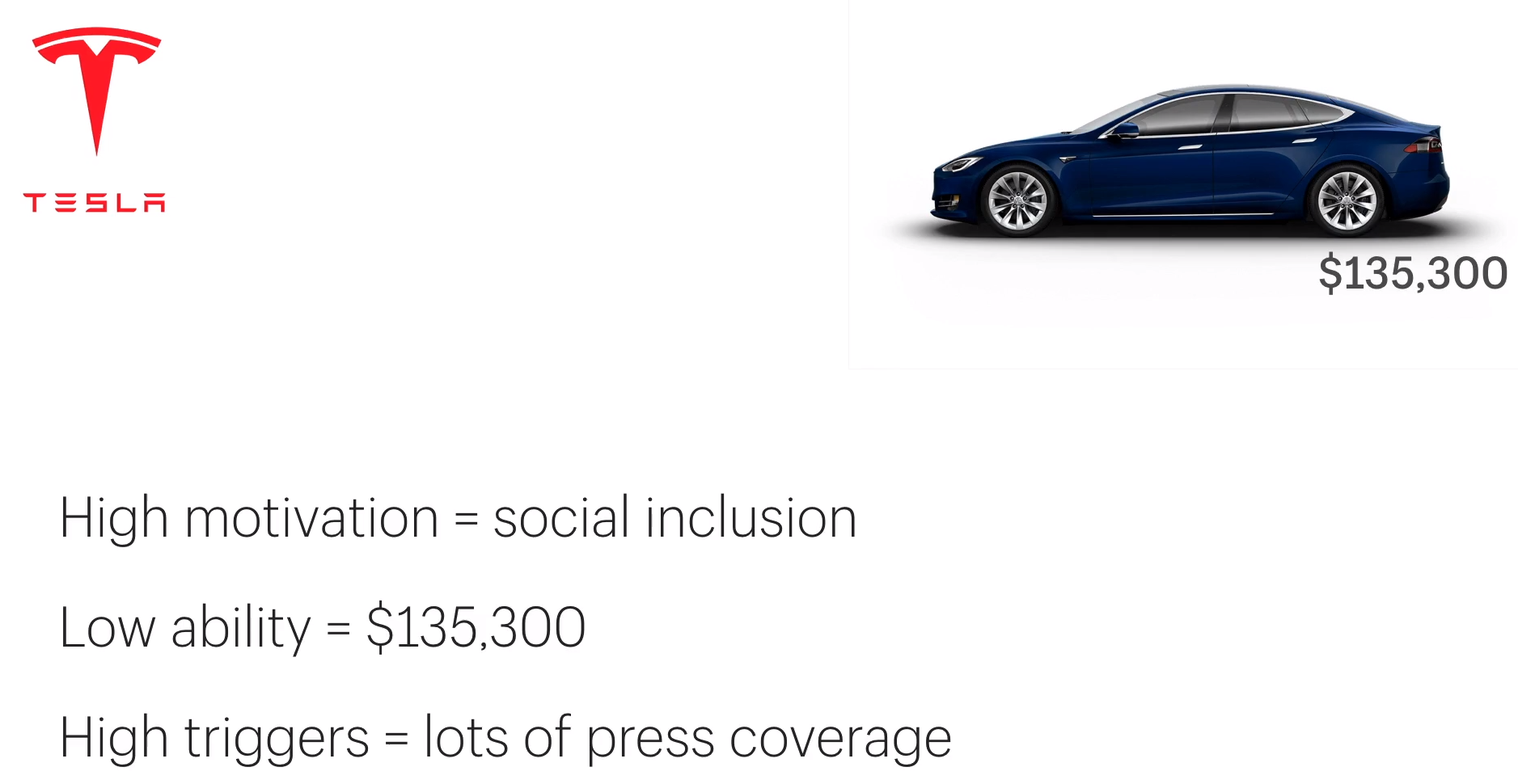
The motivation for buying a Tesla is pretty high. That’s obvious. People want to be the star of the show and to find social inclusion. This is how people build their identity. They buy into what they believe in. In this case, they care about the environment and are futurists.
Tesla aligns their triggers with these motivations. There are countless press mentions almost daily, from both car aficionados and mainstream media, about Tesla’s superiority or Elon Musk’s genius.
But, what about ability? That price tag is steep for the majority of people in the world, meaning ability for most is on the low end of the spectrum. Not everyone can afford to spend over $130,000 on a car.
So what is Tesla doing?
They’ve already conquered the high-end of the market to establish an aspirational brand that means something.
Now, they’re expanding into the lower-end of the market to increase the ability of people everywhere to purchase. They’re taking strides to minimize or reduce objections as much as possible.
But let’s do an experiment:
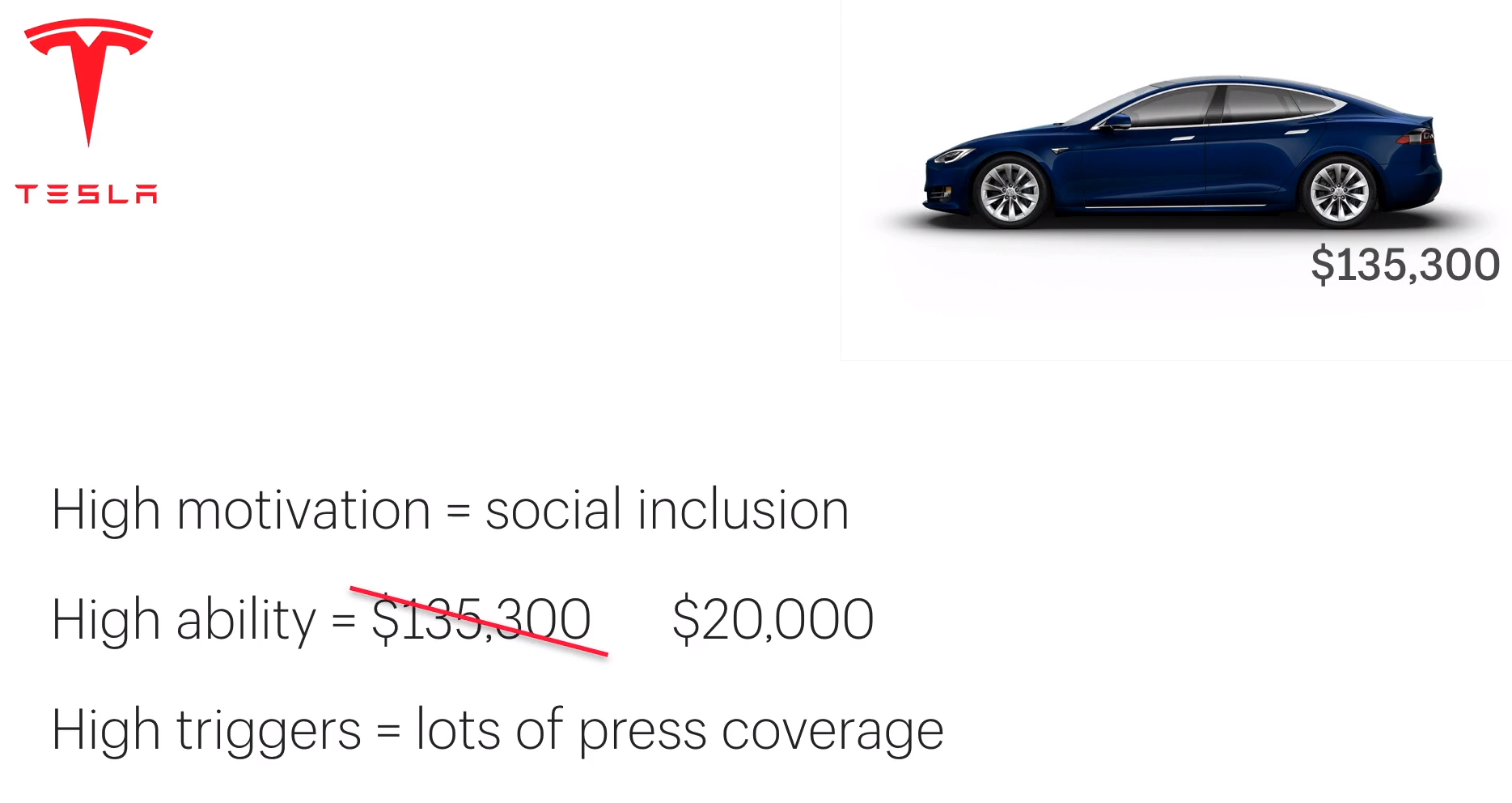
What if Elon Musk gave you a steep discount? Do you think you’d be more likely to buy one?
Under that condition, the motivation, ability, and triggers would line up perfectly for a much larger audience. Add in some financing terms and there’s almost no reason not to buy. Whether this makes sense for them as a business or not, that’s a different question.
To put this into practical terms, the red line on Fogg Model represents whether an action takes place or not. Below the line and it fails. Above it, the action happens.
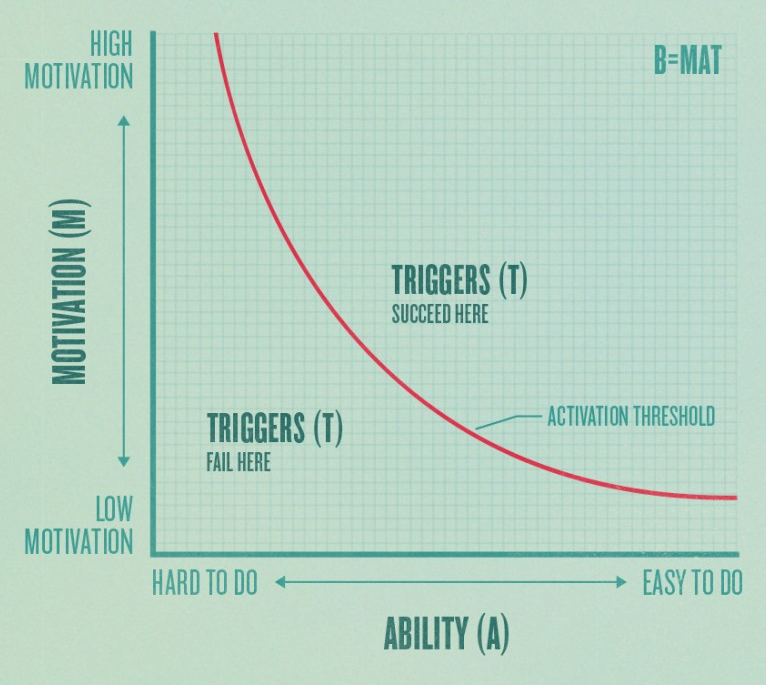
If you have triggers — e.g., offers — that don’t succeed, then there is a disconnect between motivation and ability.
A prime example of aligned motivation, ability, and triggers was implemented by Sheplers on Black Friday. They wanted to capitalize on high motivations and already had the triggers in place. But one critical component was missing from the equation.
People weren’t buying like Shepler’s expected, meaning a specific element within their behavior formula was off. The price tag was still too high, so ability was low.
With competitors like Amazon offering free two-day shipping, it’s no wonder that purchasers would see more value elsewhere. Course correcting, Sheplers decided to offer free shipping in their home state of Texas. This simple tweak to a customer’s “ability” generated a 57% increase in their top line.
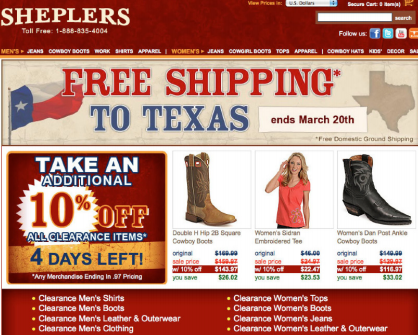
Plus, they also saw a 20% increase in net contribution and a 48% increase in new customer acquisition.
Similarly, StitchLabs found that free shipping — one simple tweak to increase motivation and ability — generated a 10% surge in revenue.
So, how can the right data help in unearthing your own insights?
Collecting Customer Data to Create Psychology Based Persona Profiles
Only 6% of senior executives believe that they know their customers needs very well. That means most companies don’t know where to even begin. It’s nearly impossible to sell effectively when you don’t even know where to start collecting customer data.
So it’s no wonder conversion rates are averaging 2-3%.
Here are a few critical ways to create psychology based persona profiles that you can leverage in your sales funnel
1. Mine Your Analytics for Demographic Data
The first step in building out real persona profiles is understanding your target market demographics. Thankfully, you can quickly access this information from inside a few Google Analytics reports.
Start by pulling up the gender and age report. You can find this by navigating to Audience > Demographics > Gender. Then, add Age as a secondary dimension.
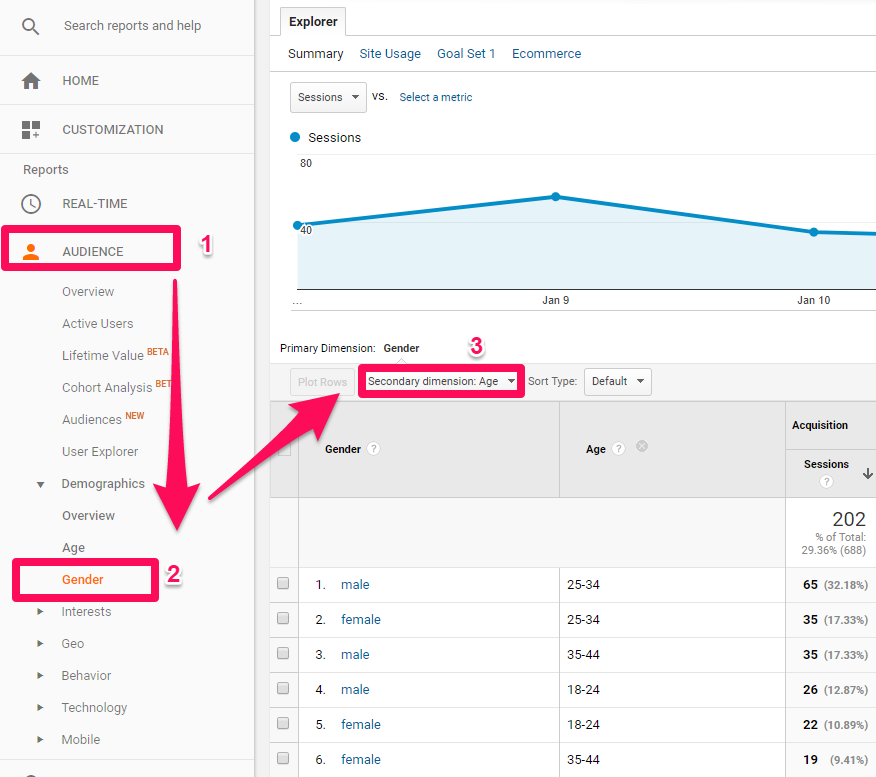
Note this information down, and see which customer segments are producing the bulk of your sessions. You should also keep an eye on “% New Sessions” in your report to spot any trending subsets of your target market.
Next, you need to access your Geolocation report to get a sense of where your customers are located. This is critical for personalization like creating specialized, location-based offers.
To find this report, head to Audience > Geo > Location and add City as the secondary dimension.
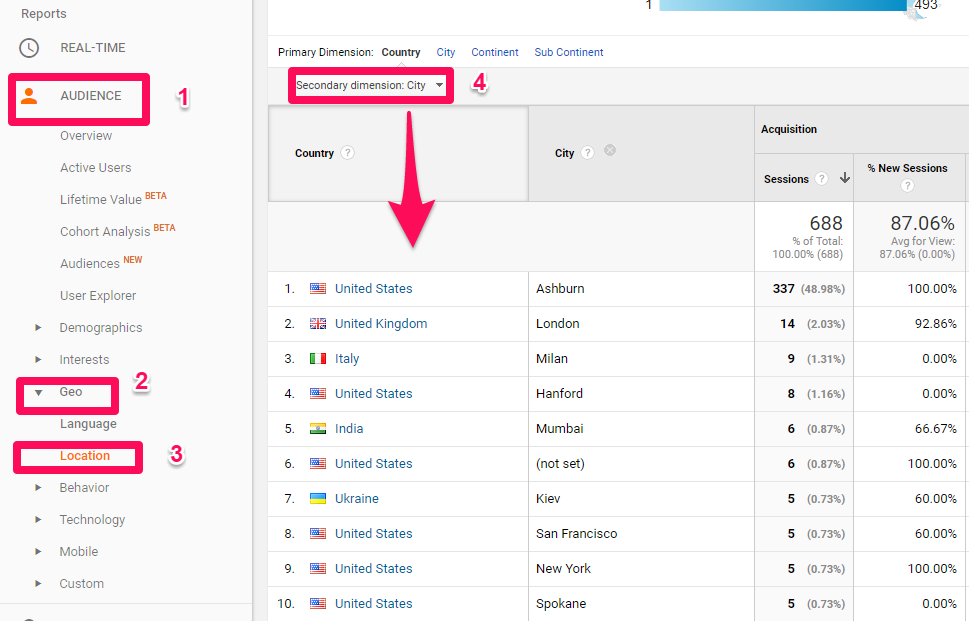
The next report to pull is the Facebook’s Analytics Page Likes report. Navigate to your Page and then look for Page Likes. This report tells you which pages your audiences like most, making it perfect for interest-based research about their personality or behavior.

Using Shopify, you can quickly identify visits by referrer in the Reports section of your Analytics dashboard. These reports can show you which sites your visitors spend the most time on, and how they access your site:
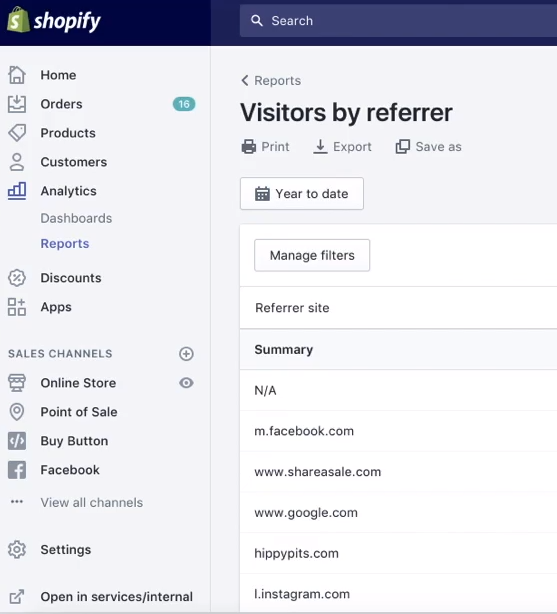
2. Test the Motivations Your Audience Responds to Best
Now that you’ve collected powerful data for your personas, it’s time to put the motivations to the test. Let’s start with BJ Fogg’s model that encompasses the six key motivations:
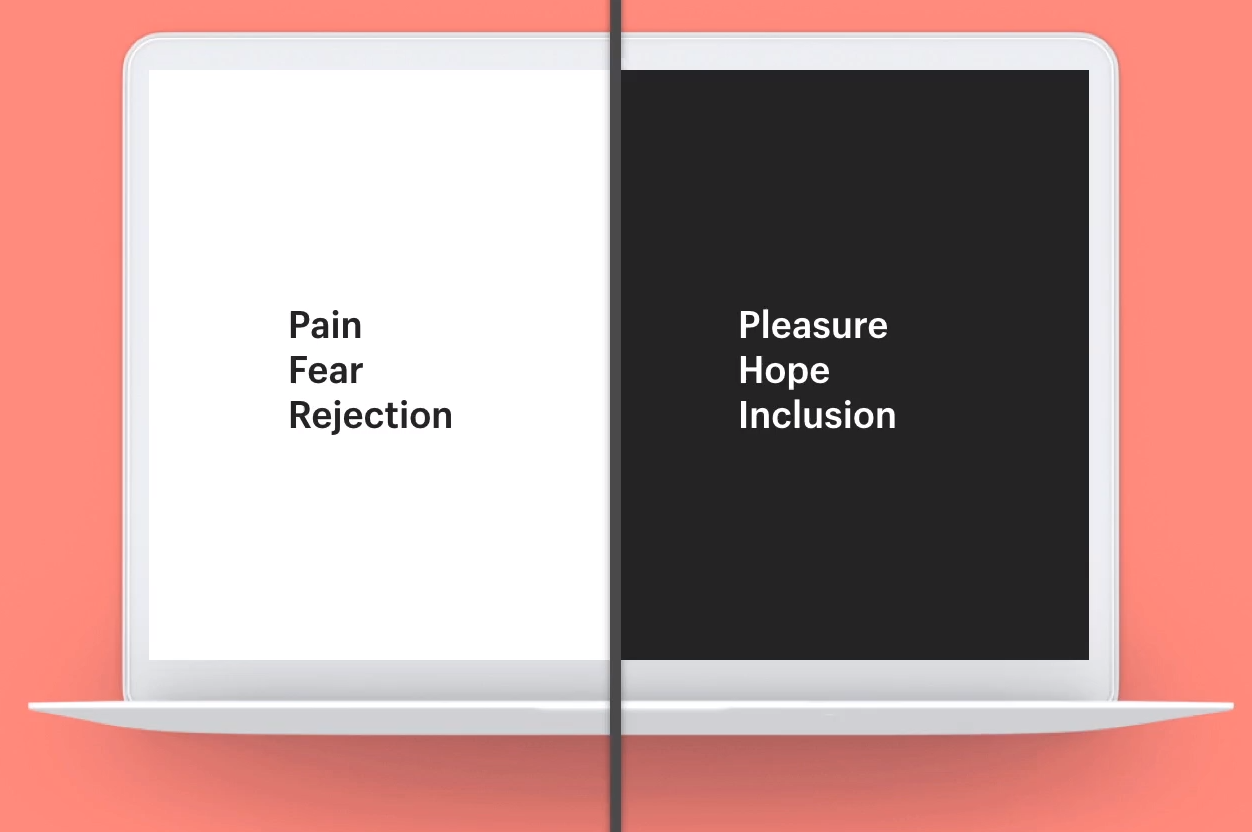
The goal of this exercise is to objectively find which motivations have the biggest impact on your audience. In other words, which ones better align their ability, motivation, and triggers to result in more purchases.
Here, we can test multiple motivations using multiple formats and variations.
Step 1
Start by running Facebook Ads to see which motivation your audience responds to. Then, test the winning motivation with different images and text to incrementally improve results.
Gymshark excels at this tactic, constantly testing and refining different motivations. For example, they tap into the fear of missing out (FOMO) in one of their latest Facebook Ads:
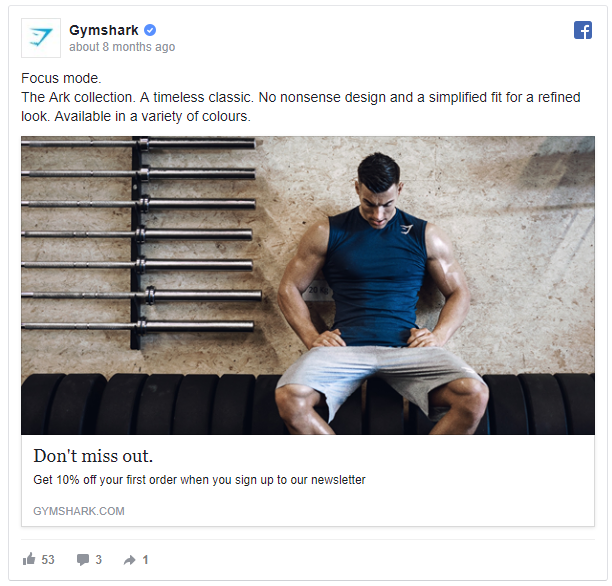
Bonobos also tweaks and refines their motivations, tapping into an inclusion motivation with their latest rendition. Using images of multiple friends and the tagline “fit for every man” helps to motivate users to buy based on inclusion and hope.
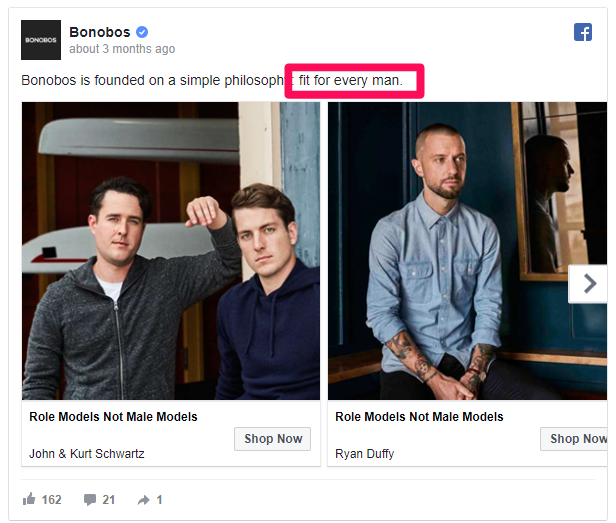
Step 2
Next, test these motivations again using your landing page or email opt-in incentives.
Bonobos carries over that same motivational messaging onto their landing page, assuring each visitor that their product provides inclusion and hope:
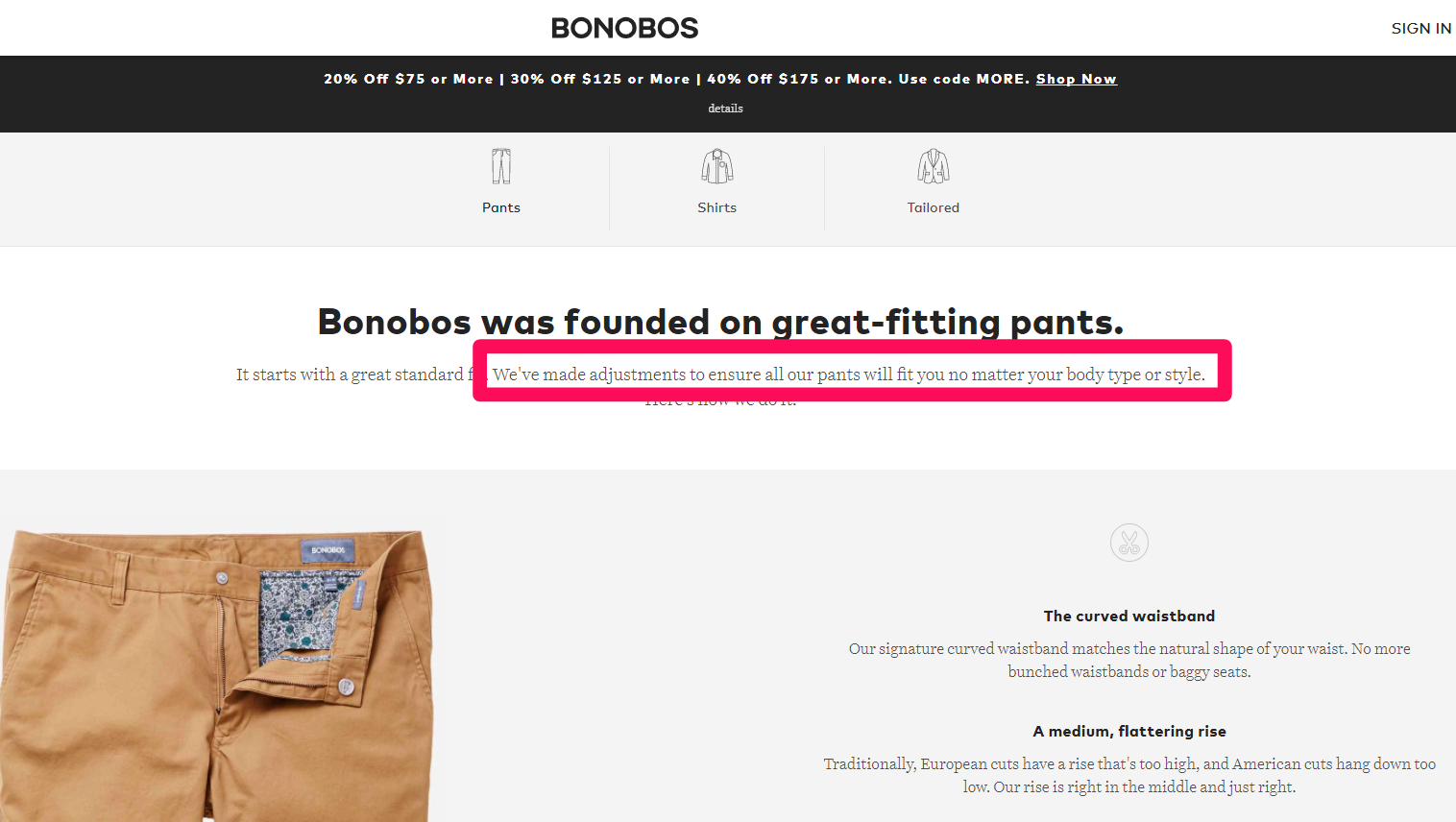
Follow in the footsteps of Bonobos and Gymshark by testing each motivation from BJ Fogg’s model. See which motivations resonate most with your target markets, and then use them across customer touch-points or future campaigns to get the sales you deserve.
3. Survey Existing Customers
Next, it’s time for qualitative research to understand the voice of your customer. This will tell you which ‘tone’ to use or ‘vibe’ they’re looking for. Surveys are perfect for quickly understanding which problems were (or weren’t) solved in your current customer journey.
Using the Stages of Change model, you can analyze survey data to see which factors moved them down the funnel or caused them to bounce before buying.
The POWr Survey app makes this process a breeze:

This survey application will allow you to collect customer feedback and information at the point of purchase, meaning they won’t have to click on external links to submit a survey. It just pops up when they’re ready to buy.
Make sure not to only ask multiple choice questions. You want to hear from your customers in their own words what their experience was or how they would like it improved.
When surveying existing customers, start by thinking about the goal you are trying to accomplish or the specific data you want from the customer.
For example, maybe you want to learn about how they heard about you and how long it took them to buy from you. Or perhaps you’re interested in discovering the number of times they visited your site before buying, and which offer finally pushed them over the finish line.
In other words, you’re aiming to understand the micro-conversions that caused the action to take. The more specific, the better, because you’ll know which tactical triggers to implement to produce the desired response.
Pulling It All Together For a Persona
After completing the steps above, you should have a detailed persona that you can use to add a personal touch and target customers better than ever before. An example persona should contain everything from demographic data to interests, motivations like hope, inclusion, and specific triggers:

Customer psychology is everything when it comes to building a persona. It tells you the specific triggers to use to move them from stage one to two. It can also help you figure out when to take a step back and nurture them before selling again.
Compile all of your data from the previous steps to create multiple customer personas that you can leverage as segments for selling in ecommerce
And remember, with great power comes great responsibility. Understanding user behavior can make you a great marketer, but being manipulative never pays off in the long run.
Market for your customers, not to them. Research their deepest desires. Then, create a product and brand that fulfills those deep needs.
Eventually, if you do this well enough, and offer enough value to your customers, you’ll end up with a genuine, long lasting relationship and that is the key to a high customer lifetime value, and a thriving ecommerce business.





